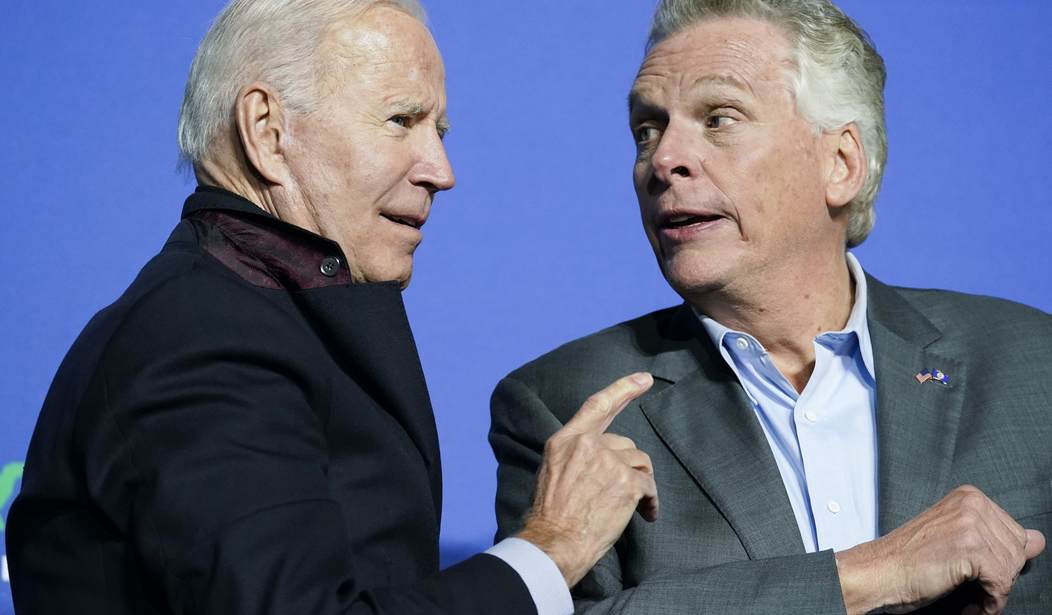Something odd happened on the way to the October jobs report. The Bureau of Labor Statistics reports that the US economy added 531,000 jobs last month, beating expectations and seemingly reversing a trend toward stagnation. However, BLS tacked on another 235,000 jobs in revisions to the previous two months, a strangely large revision that will have everyone across the political spectrum wondering what happened at BLS:
The change in total nonfarm payroll employment for August was revised up by 117,000, from +366,000 to +483,000, and the change for September was revised up by 118,000, from +194,000 to +312,000. With these revisions, employment in August and September combined is 235,000 higher than previously reported. (Monthly revisions result from additional reports received from businesses and government agencies since the last published estimates and from the recalculation of seasonal factors.)
Bear in mind that the Q3 GDP report showed stagnation as well (2.0% annualized growth, -0.1% final sales of domestic product), so those original numbers tended to fit within the parameters of economic reality. These new numbers aren’t a misfit either — hiring is a lagging indicator of economic growth, so it’s not necessarily unusual to see hiring continue even while growth begins to tail off, at least for a short period. Revisions are normal processes in BLS reports, but usually the numbers are much smaller than these and tend to even out.
Having two six-figure revisions in one direction in the same report is, um … notable. What “seasonal factors” induced this level of inaccuracy? The percentage of miss in August was 24%, and in September 38%. Those fall very far outside the range of normal statistical noise.
If I were in the White House, and perhaps especially on Terry McAuliffe’s campaign, I’d be complaining about BLS’ performance and blaming them for the political impact of these numbers. If I were in the opposition party, I’d wonder if BLS wasn’t tasked to “find” more jobs in the statistics. (I’m in the Hanlon’s Razor party these days, so I chalk it up to bureaucratic incompetence.)
At any rate, the topline number did beat expectations (450K consensus) and is definitely a move in the right direction. The wage numbers look strong as well, an outcome of a labor squeeze that may not last much longer. Even with the revisions, however, the labor participation rates aren’t moving at all. Neither are the part-time figures:
The labor force participation rate was unchanged at 61.6 percent in October and has remained within a narrow range of 61.4 percent to 61.7 percent since June 2020. The participation rate is 1.7 percentage points lower than in February 2020. The employment-population ratio, at 58.8 percent, was little changed over the month. This measure is up from its low of 51.3 percent in April 2020 but remains below the figure of 61.1 percent in February 2020. (See table A-1.)
The number of persons employed part time for economic reasons, at 4.4 million, was little changed in October. These individuals, who would have preferred full-time employment, were working part time because their hours had been reduced or they were unable to find full-time jobs. This measure has essentially returned to its February 2020 level. (See table A-8.)
The number of persons not in the labor force who currently want a job was 6.0 million in October, essentially unchanged over the month but up by 968,000 since February 2020. These individuals were not counted as unemployed because they were not actively looking for work during the 4 weeks preceding the survey or were unavailable to take a job. (See table A-1.)
We appear to be gaining ground over the impact of the pandemic, but only statically, and even then not fast enough if we had a strong recovery under way. Washington Post economics reporter Heather Long pointed this out:
The US has recovered 81% of the jobs lost in the pandemic. (Put another way, that means over 18 million people have returned to work).
There are still 4.2 million jobs to go. https://t.co/dNbFXogSCU
— Heather Long (@byHeatherLong) November 5, 2021
The 4.2 million figure is accurate — in a static sense. However, population growth continues in the US, usually between 2-2.5 million per year. With a labor force participation rate of 61%, we’d need to add 122,000 jobs per month on the low end to keep up. In the eighteen months of the shutdown, therefore, we’d have to add in another 2.2 million jobs to get back to a true normal, which means we’re not 4.2 million jobs down but 6.4 million jobs in the hole. The algebra on this is a bit beyond me at the moment, but it would take us at least a couple of years to catch up to the pandemic losses between job creation and population growth, even at October’s expansion rate alone.
This is undeniably a good report for everyone except the BLS, which should answer some questions about these revisions. However, it’s not a great report considering the hole we’re in.








Join the conversation as a VIP Member